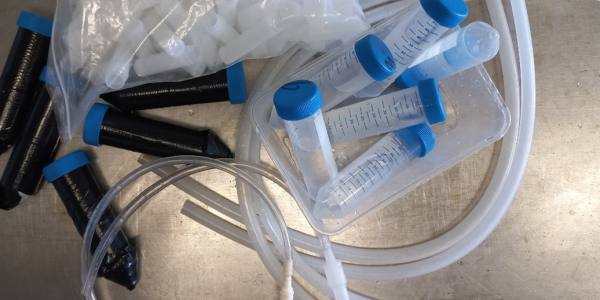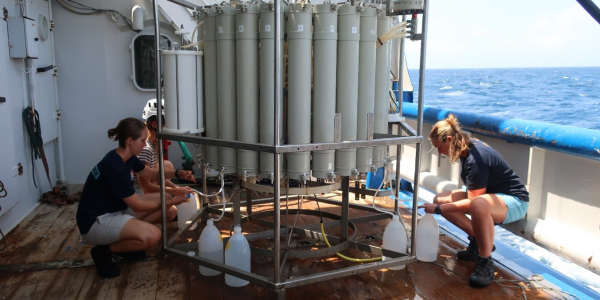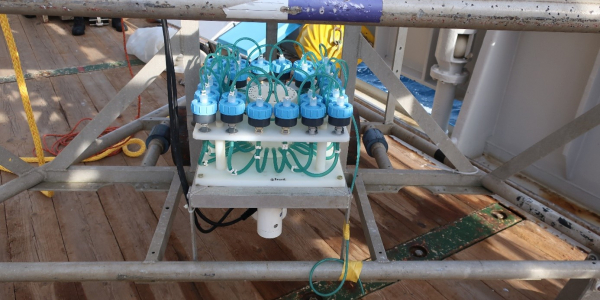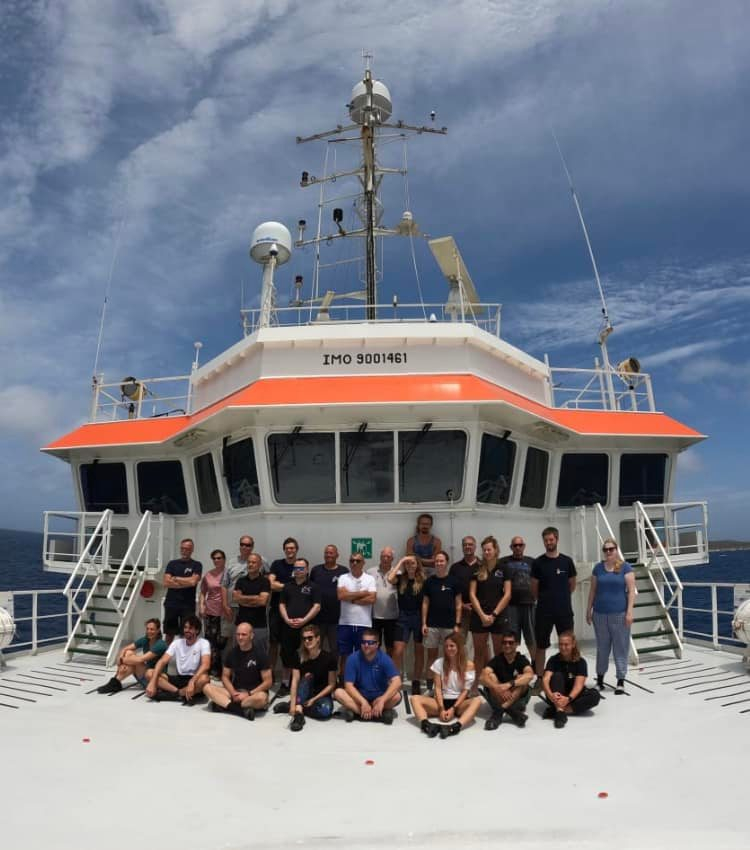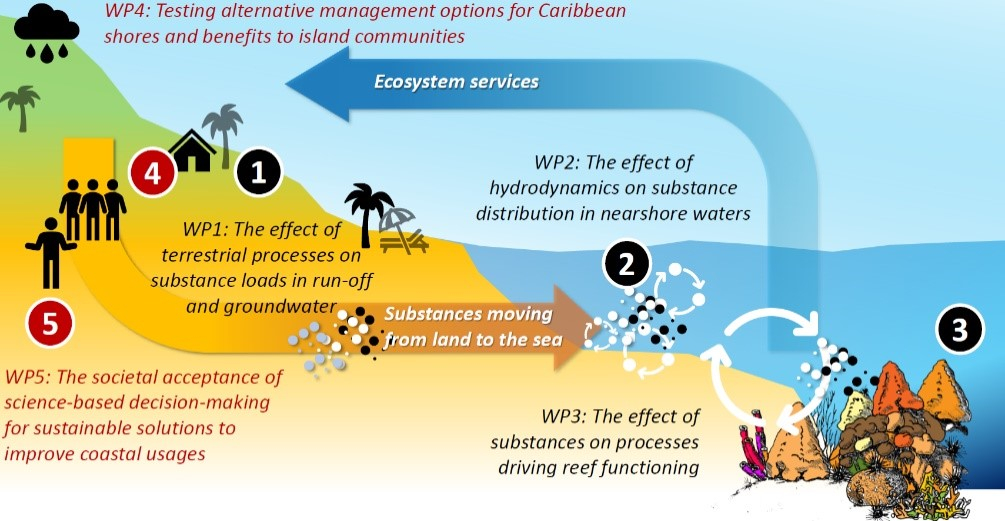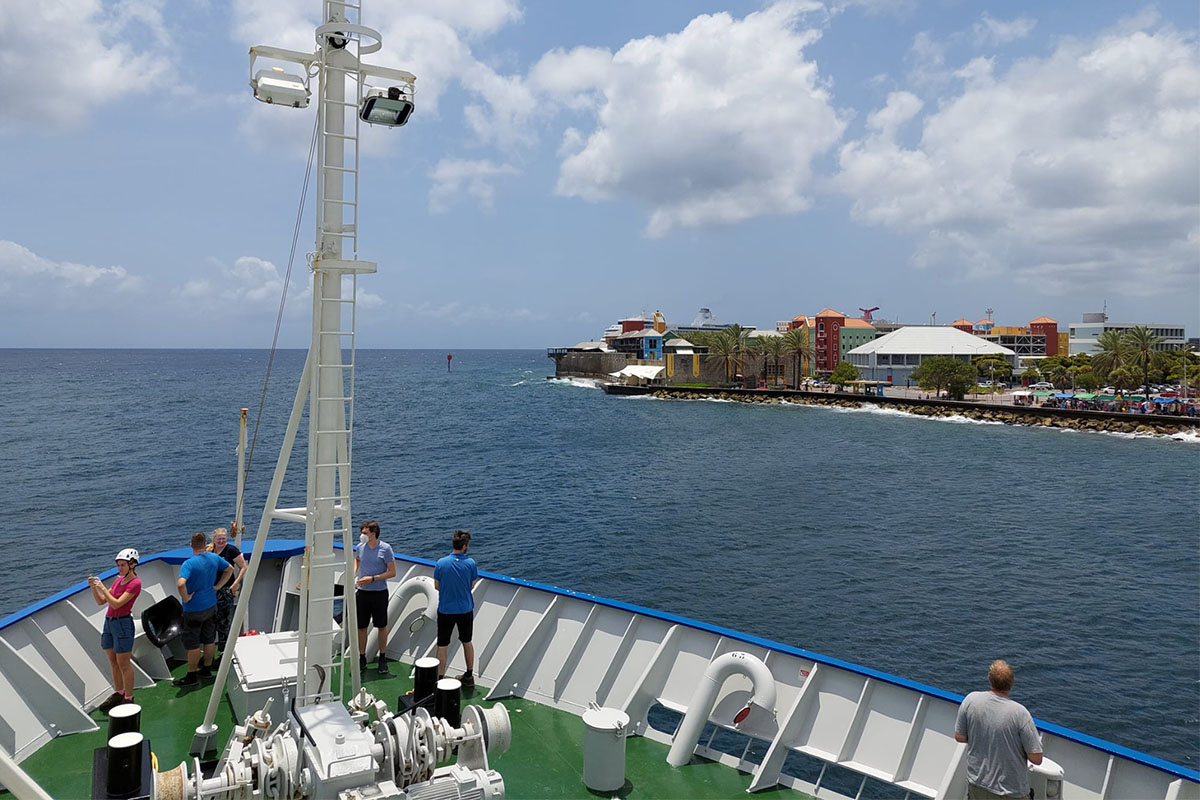
The effect of water quality on ecosystem functioning is influenced by processes that happen on land (groundwater flow, run-off and coastal development), as well as processes happening in the ocean (hydrodynamics, mixing).
The coral reefs on Curacao are situated between the land and the ocean and are therefore influenced by all these processes. For example, substances like pollution can flow into the sea after a rainstorm. But ocean currents can bring the hazardous substances to coral reefs further from the source of the pollution.
Biological and geochemical characteristics of different water layers
During this expedition NIOZ researchers aim to determine how the water flows around the island of Curacao and define the biological and geochemical characteristics of the different water layers by collecting water samples. Water turbulence and mixing in combination with the bottom topography will determine how chemical and biological substances are distributed along the island and what potential influence they can have on coral reef health and biodiversity.
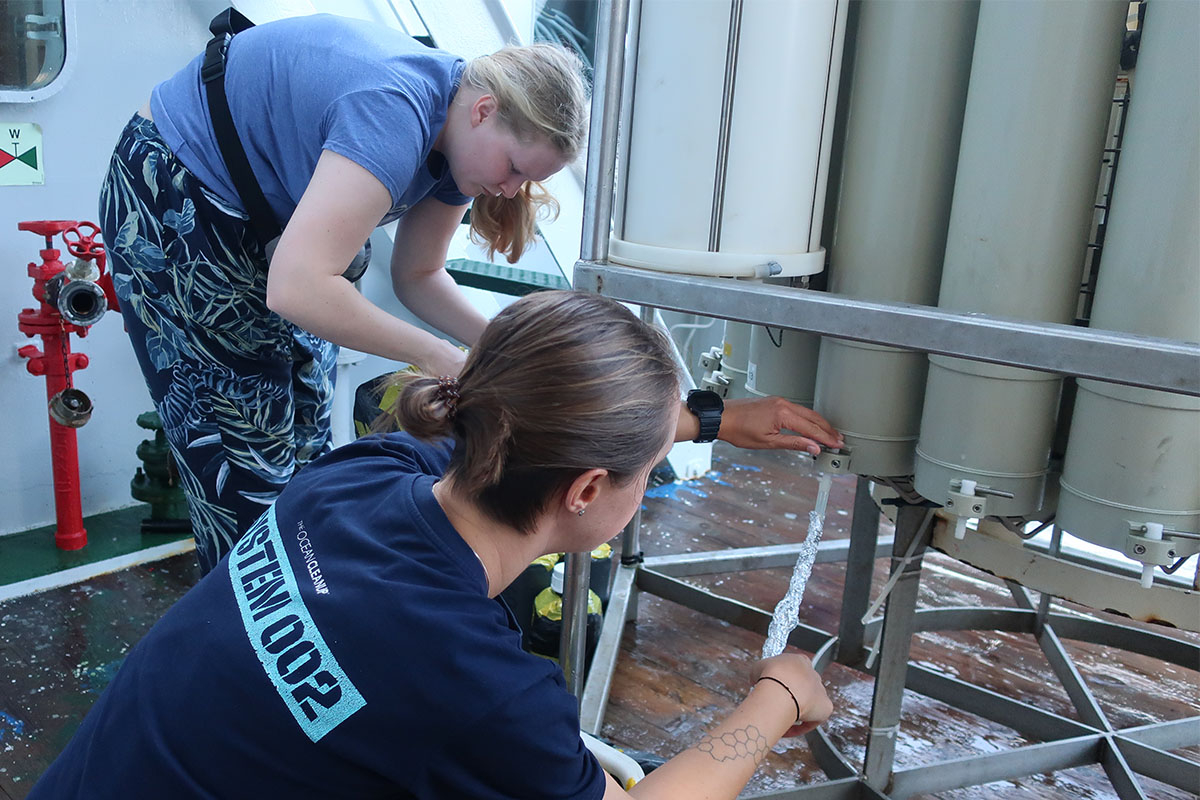
With the CTD-Rosette physical data like temperature and salinity from the water column are collected during the downcast, while based on the water column profile water samples are taken during the upcast at chosen depths.
Live from the deep
On the Pelagia, we do not watch the newest Oscar winning movie, or a thrilling Netflix series, what we see is way more exciting... We discover the deep slopes of Curaçao. We visit areas on the seafloor that no one ever looked at before.
Curaçao is well known for the beautiful shallow water coral reefs. But during this cruise with the research vessel Pelagia we also have the opportunity to study the underwater landscape and its inhabitants in the deep and dark waters beyond scuba diving depth. For this we use a tethered camera system, consisting of a downward and forward looking camera that are fitted in a frame, two lasers for scale. A sonar system is used to observe obstacles and a temperature and oxygen sensor measure changes in environmental conditions along the transect.
The camera frame is attached to a Kevlar cable and is dragged behind the ship at a constant height above the bottom. Via optical fibres in this cable we have a live view of what we film at the seafloor, which allows us to study the density and abundance of deep-sea life, but also to determine suitable sites for the box core sampling and deployment of landers. Our video transects show a diverse landscape of steep cliffs and soft sediment areas on the deep slopes around Curacao. These areas create a multitude of habitats for sea urchins, fish, sponges and soft corals. The presence of these hotspots indicate that sufficient food is available at these depths to sustain the rich communities.
Lucky shot

“We were lucky enough to spot a dumbo octopus on one of our video transects. Dumbo octopuses have paired fins on their head that resemble floppy ears And are not often seen in the deep sea,” said Furu Mienis, expedition leader on the RV Pelagia for the Sealink expedition.
Search for floating Sargassum in the waters of Curaçao
Tom Theirlynck
As a PhD researcher focused on the floating brown macroalga Sargassum, I might seem like the odd one out on this SEALINK cruise focused on coral reef health, However, Sargassum can have large impacts on the coral reefs of Curaçao as well. Over recent years, Sargassum has started forming dense accumulations in the Atlantic Ocean, being rapidly transported to coasts of the Caribbean.
One of these stranding locations past the route of floating Sargassum are the coasts of Curaçao. Particularly on the Northern side of the island, Sargassum causes strandings stretching for kilometers along the coast that can negatively impact the local fauna and smother pristine coral reefs. During this cruise I am sampling Sargassum in the waters around Curaçao with tools as the manta trawl, a large net that is pulled along the ship to catch floating algae in the upper layer of the water.
I aim to learn about the differences in the attached microbiome and associated macrofauna in Sargassum that travels to the coasts of Curaçao and how it impacts the local coastal fauna and microbiome. Besides I will sample Sargassum to perform growth experiments with help of excellent facilities at the Curaçao Sea Aquarium. Doing so we hope to close the knowledge gap of the growth causes of floating Sargassum and how it influences the coastal ecosystem of Curaçao.
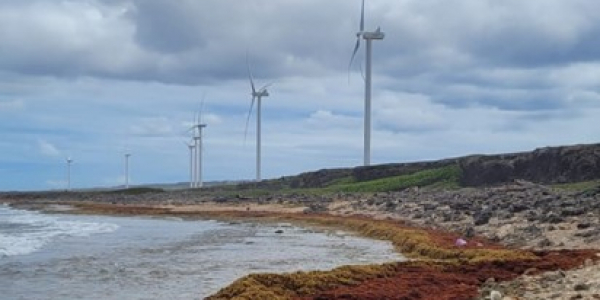
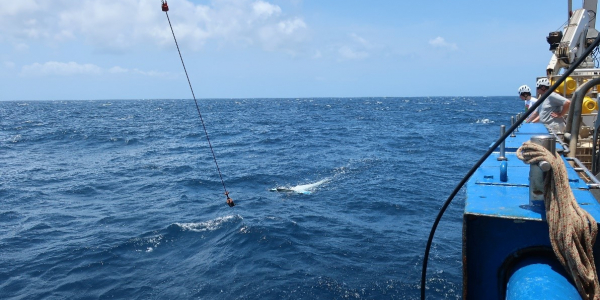
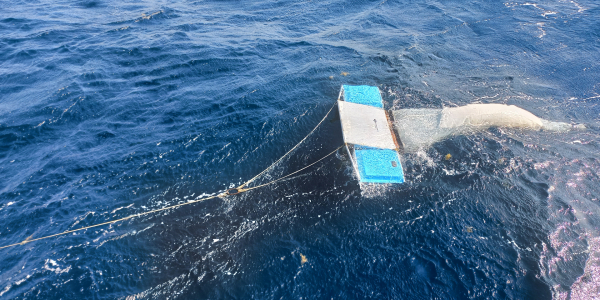
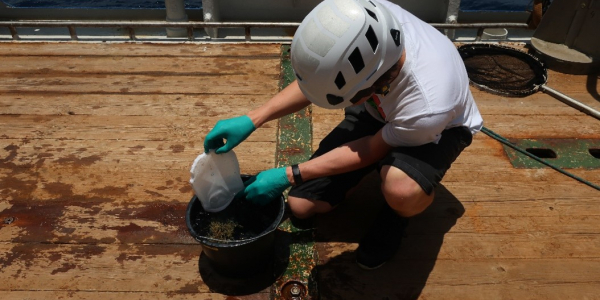
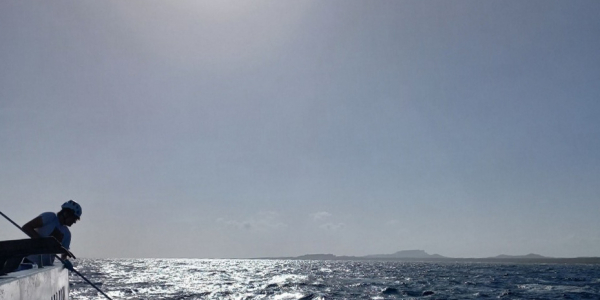
'Tubes are an essential piece of equipment on board the RV Pelagia'
Francine van Hee
Tubes… What is your first thought when you hear the word “tubes”? Are you thinking about those big underground PVC pipes? Perhaps you consider plastic bottles as tubes, a paper straw to drink from, or even the watering hose in your garden. Maybe your mind immediately pictures the chemistry lab with glass culture tubes. You and me both! But… why bother tubes? When I was aboard the marine research vessel Pelagia, I soon realised tubes are an essential piece of equipment in science. During the spring 2022 expedition for the project SEALINK, I saw almost everyone using tubes at a certain moment.
Since I am aboard the research vessel Pelagia, I soon realised tubes in many shapes and sizes are an essential piece of equipment in marine science. The exact moment I realised the importance of tubes was when taking seawater samples from the CTD-rosette (see above).
First, a small silicone tube attached to a syringe was used to take water samples. This would then be filtered into pony vials (more tubes!) to analyse different nutrient concentrations. Second, slightly larger silicone tubes were used to fill up 5 litre bottles. This water would be poured through a filtration system (which also has silicone tubes!) to extract the particulate organic matter content in the water. Third, 50 ml Greiner tubes were used to take water samples for analysing the count of phytoplankton, bacteria and viruses in the water.
Last but not least, large darkened bottles were filled with water from the Niskin bottles using darkened silicone tubes. This water would subsequently be used in the laboratory for multiple purposes, using even more tubes: dark 50 ml Greiner tubes to measure the production of viruses; 15 ml cryovials to get the viral count after fixed time periods; thin silicone tubes to filter out (get rid of) viruses from a sample, in order to measure subsequent viral production; additional thin silicone tubes for filtering water samples to get a lot of data on the biochemical substances in the water, which could indicate for example the pollutants coming from land; more dark 50 ml Greiner tubes to measure the grazing of fluorescently labelled bacteria (which indicates the grazing on bacteria by, for example, phytoplankton).
The CTD-rosette is not the only instrument where tubes play a role. Another instrument that has tubes is the McLane particle pump, which was attached to an ALBEX Lander and deployed on the seafloor for a few days to filter water over time.
